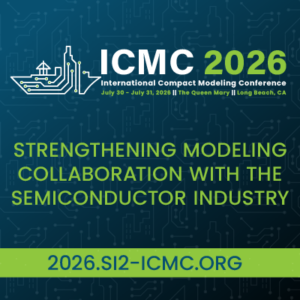You are currently viewing SemiWiki as a guest which gives you limited access to the site. To view blog comments and experience other SemiWiki features you must be a registered member. Registration is fast, simple, and absolutely free so please,
join our community today!
By Omar Elabd
As semiconductor designs move below 7 nm, parasitic effects—resistance, capacitance and inductance—become major threats to IC performance and reliability, often hiding where netlist reviews cannot reach. Design teams need advanced visualization tools like heat maps, layer-based analysis and direct layout… Read More
By Mark Tawfik
Overview: Protecting ICs from costly ESD and latch-up failures
Electrostatic discharge (ESD) events cost the semiconductor industry an estimated $8 billion annually in lost productivity, warranty claims and product failures [1].
Ensuring the robust protection of integrated circuits (ICs) against various… Read More
By Zameer Mohammed
This article claims to provide clear key insights of Min Pulse Width (MPW) timing signoff check, proactive closure strategies for faster time-to-market, and effective methods to prevent silicon failures.
Min Pulse Width (MPW) check for timing signoff has become an important design constraint at the sub-5nm… Read More
By Nir Sever, Senior Director Business Development, proteanTecs
Silicon-proven LVTS for 2nm: a new era of accuracy and integration in thermal monitoring
Effective thermal management is crucial to prevent overheating and optimize performance in modern SoCs. Inadequate temperature control due to inaccurate thermal sensing… Read More
PwC’s comprehensive report, “Semiconductor and Beyond,” released in 2026, provides a strategic outlook on the global semiconductor industry amid rapid transformations driven by AI, geopolitical tensions, and supply chain shifts. Structured into four sections—Foreword, Demand Analysis, Supply Analysis,… Read More
In the rapidly evolving landscape of semiconductor manufacturing, the demand for processors that handle increasing workloads while maintaining power efficiency and compact form factors has never been higher. Intel’s Foveros 2.5D packaging technology emerges as a pivotal innovation, enabling denser die integration… Read More
By Ujjwal Negi – Siemens EDA
Multi-die architectures are redefining the limits of chip performance and scalability through the integration of multiple dies into a single package to deliver unprecedented computing power, flexibility, and efficiency. At the heart of this transformation is the Universal Chiplet Interconnect… Read More
In the ever-evolving landscape of computing, Intel’s patent application for “Software Defined Super Cores” (EP 4 579 444 A1) represents a groundbreaking approach to enhancing processor performance without relying solely on hardware scaling. Filed in November 2024 with priority from a U.S. application… Read More
TSMC, the world’s most trusted semiconductor foundry, released its 2024 Sustainability Report, underscoring its commitment to embedding environmental, social, and governance principles into its operations. Founded in 1987 and headquartered in Hsinchu Science Park, TSMC employs 84,512 people globally and operates… Read More
Introduction by Lip-BU Tan:
I’m an engineer at heart. Nothing motivates me more than solving hard problems. Our teams across Intel are driven by this same mindset—inspired by the power of technology to enable new solutions to our customers’ toughest challenges.
I fundamentally believe this will be a catalyst for innovation throughout… Read More



![[white paper] Parasitic Analysis Figures](https://semiwiki.com/wp-content/uploads/2025/10/Fig1-net-level-visualization-150x127.jpg)













Quantum Computing Technologies and Challenges